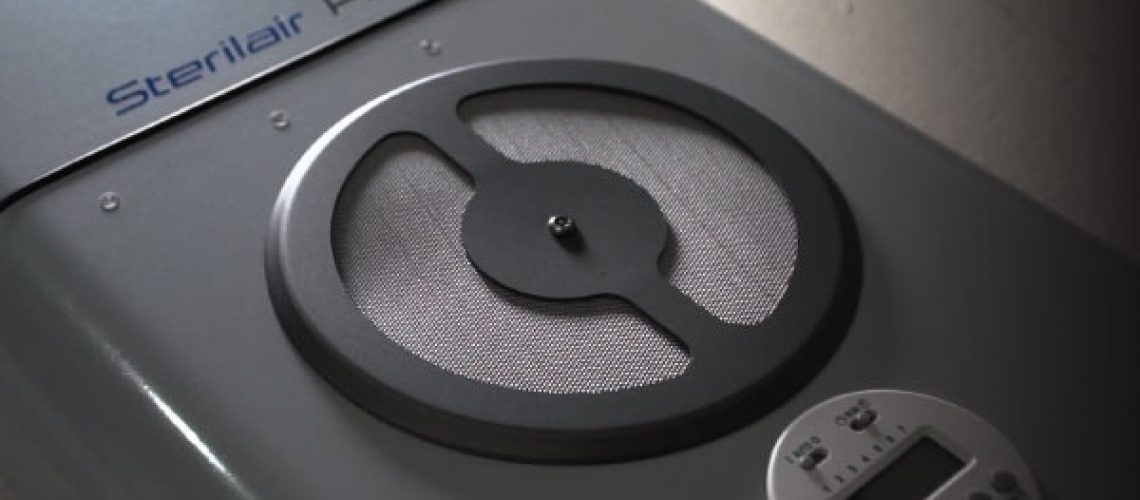Air Cleaner to reduce risks of COVID-19 transmission by aerosol
- By Firas Amin
- August 24, 2020
- 2:02 pm

There was ongoing debate about whether COVID-19 is airborne or not. However, recent evidences suggest COVID-19 is very likely able to transmit by aerosol that can accumulate in poorly ventilated indoor environment according to a published article in Nature journal, one of the leading international weekly journals.
What is aerosol? The definition is not agreed on, but it is based on particle size. In WHO’s definition, aerosol are particles less than 5 µm. Aerosol travels further and stays longer in the air.
Healthcare workers are at higher risks of exposure to aerosol from infected patients in clinics, where the poorly indoor ventilation will accumulate the density of aerosol.
Take a look at the recent study of aerosol trajectory from an infected patient published in Elsevier journal. When an infected patient pays a visit at the clinic, the picture shows how sneezing, coughing and talking will let out aerosol in the poorly ventilated indoor room.

Picture by Jayaweera et al. When an infected patient sneeze, cough and talk, the aerosol will be released in the air and wait to find another host.
Another study published in Journal of the Royal Society Interface found that the accumulated aerosol from a patient in a dental clinic can be gathered around the breathing zone of the dental healthcare worker. The study has also compared case analysis and summarize that placing the air cleaner in the corner close to patients of the clinic, the aerosol can be effectively reduced.

Picture by Chen et al show that the dental healthcare worker’s breathing zone is gathered by the aerosol released by patients.

Picture by Jayaweera et al showed that although surgical masks and N95 masks are able to protect against droplets, they cannot protect healthcare workers against all aerosol.
Neither surgical mask nor N95 mask cannot protect all aerosol from going into the airway even though they can protect against the droplets.
However, there is additional way to better protect the healthcare workers! That is to use an air cleaner in the corner of the clinic.

Check out our Air Cleaner in MedicAmins: https://medicamins.com/outlet/sterilair-pro-air-sterilisation-unit/

Picture by Chen et al showed that when an air cleaner is placed in the corner of a dental clinic, the aerosol around the breathing zone of a healthcare workers are reduced!
Study conducted by Chen et al showed at the air cleaner putting in the corner at a dental clinic will reduce the aerosol in breathing zone.
The risk of infection is not only a health risk for healthcare workers but also increase the economic burden. With air cleaner, the risk of aerosol infection can be reduced, therefore decrease the lost work hours for healthcare workers. The approximate recovery time is about 2 weeks for mild syndrome, and 3-6 weeks for severe ones. By a rough estimate using average hourly wage of 350 DKK and 40 working hours a week for healthcare workers, one reduced infected worker will save around 28,000 to 84,000 DKK productivity loss, that is not including the treatment costs. The economic burden will be reduced for the region and private employers.
References: Mounting evidence suggests coronavirus is airborne — but health advice has not caught up. https://www.nature.com/articles/d41586-020-02058-1
Jayaweera et al., Transmission of COVID-19 virus by droplets and aerosol: A critical review on the unresolved dichotomy. https://doi.org/10.1016/j.envres.2020.109819
Chen et al., The effectiveness of an air cleaner in controlling droplet/aerosol particle dispersion emitted from a patient’s mouth in the indoor environment of dental clinicshttps://doi.org/10.1098/rsif.2009.0516
Health and Medical Average Salaries in Denmark 2020. http://www.salaryexplorer.com/salary-survey.php?loc=58&loctype=1&job=2&jobtype=1
